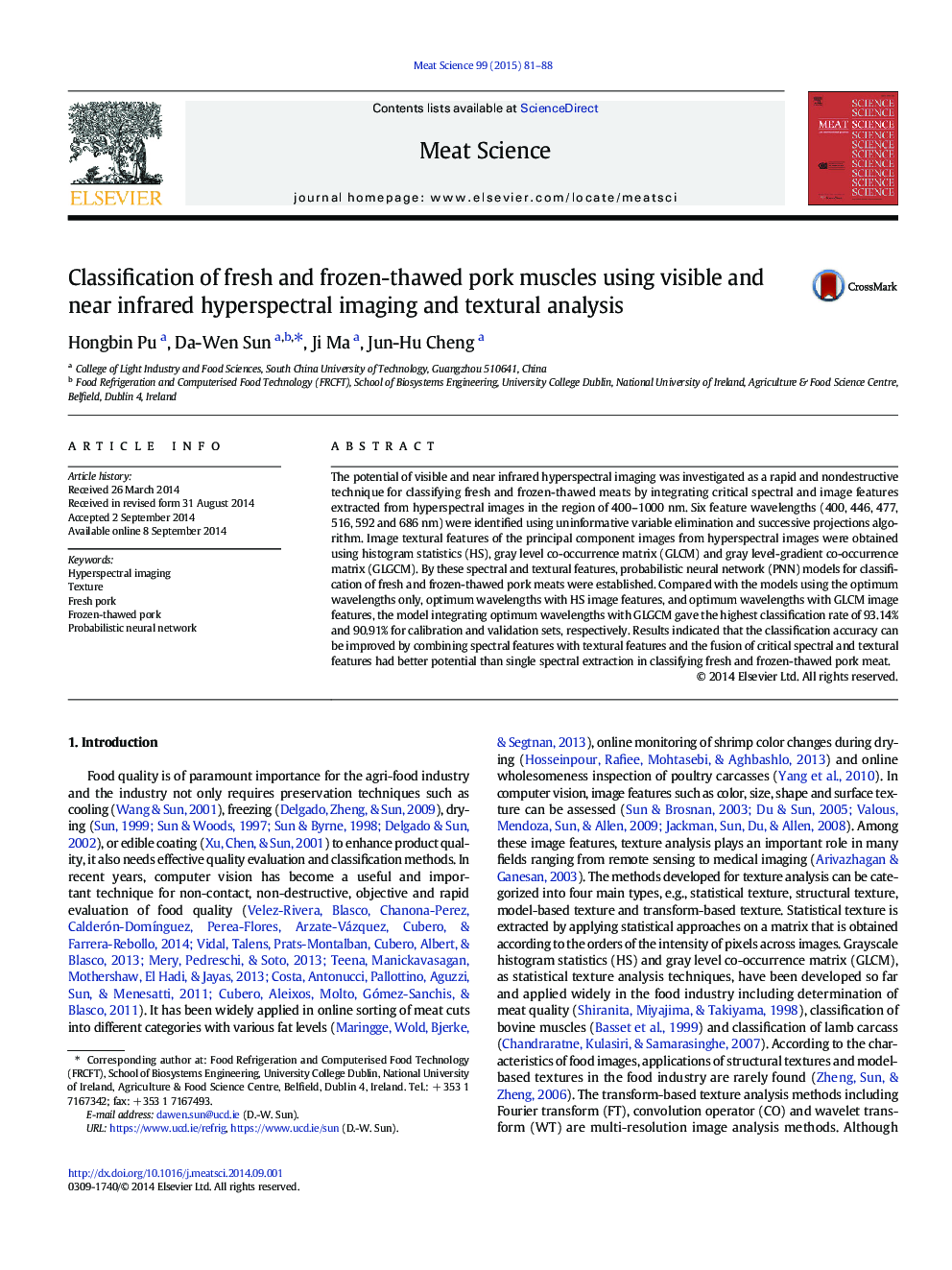| Article ID | Journal | Published Year | Pages | File Type |
|---|---|---|---|---|
| 2449864 | Meat Science | 2015 | 8 Pages |
•Spectral features were identified for classifying fresh and frozen-thawed meats.•Textural features of hyperspectral imaging were extracted.•PNN classifiers with spectral and textural features were developed.•Differences in fresh and frozen-thawed meats were visualized.
The potential of visible and near infrared hyperspectral imaging was investigated as a rapid and nondestructive technique for classifying fresh and frozen-thawed meats by integrating critical spectral and image features extracted from hyperspectral images in the region of 400–1000 nm. Six feature wavelengths (400, 446, 477, 516, 592 and 686 nm) were identified using uninformative variable elimination and successive projections algorithm. Image textural features of the principal component images from hyperspectral images were obtained using histogram statistics (HS), gray level co-occurrence matrix (GLCM) and gray level-gradient co-occurrence matrix (GLGCM). By these spectral and textural features, probabilistic neural network (PNN) models for classification of fresh and frozen-thawed pork meats were established. Compared with the models using the optimum wavelengths only, optimum wavelengths with HS image features, and optimum wavelengths with GLCM image features, the model integrating optimum wavelengths with GLGCM gave the highest classification rate of 93.14% and 90.91% for calibration and validation sets, respectively. Results indicated that the classification accuracy can be improved by combining spectral features with textural features and the fusion of critical spectral and textural features had better potential than single spectral extraction in classifying fresh and frozen-thawed pork meat.
